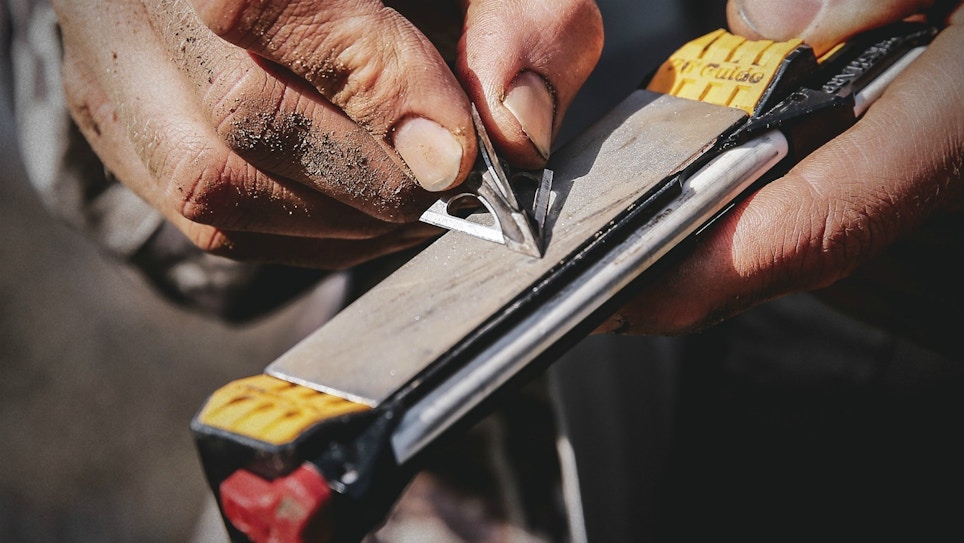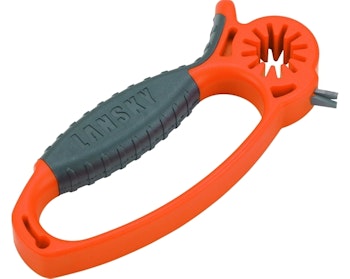During my 40-year bowhunting career, I’ve used just about every broadhead design available. I’ve killed everything from whitetails and wild turkeys to black bears and wild boar with fixed-blade broadheads and mechanicals. While I hesitate to consider myself an expert in anything, I do think I have substantial experience when it comes to broadhead design and performance on game.
For the purpose of this article, I will focus on fixed-blade models, and specifically the subject of broadhead sharpening.
To date, I’ve relied on manufacturers to provide sharp broadheads straight from the package. That is to say, I’ve never sharpened a new fixed-blade broadhead before putting it in my quiver.
The times I have re-sharpened broadheads was after killing an animal and recovering my arrow. At times the used broadhead felt nearly new to the touch, but I knew it couldn’t be. Other times, I suspect because the head impacted a rib on its way through a whitetail’s chest, I could see or feel a nick or burr on the broadhead cutting edge or tip. It obviously wasn’t useable again in its recovered state.
A Lot to Learn
One of my regular bowhunting partners has been diving deep into the subject of broadhead sharpening lately, and through text messages, emails and in-person conversations, he’s explained to me what he’s learning online. If you visit YouTube and type the words “how to sharpen broadheads,” the amount of content that appears is nearly endless. I know because I’ve done it recently. Like anything you research online, there’s helpful advice and waste-of-time trash; the only way to find the good stuff is to dive in and get started.
If the subject of broadhead sharpening is interesting to you, then I invite you to join me on my journey. Like I said, I’m not an expert, but I do have industry contacts — guys who are experts — who will help me along the way. As I discover valuable information and insight, I’ll pass it along in follow-up articles on this website. We can learn together.
My goal in this project is by late summer 2020 to be educated enough to re-sharpen several fixed-blade broadheads I have laying on my work bench, and do it the right way. These have killed whitetails, but all I’ve done since recovering the heads is washed them with hot water and soap, and dried them. I’m 99% sure they can be brought back into like-new condition. And according to my bowhunting buddy who’s further along in this broadhead sharpening skill-set journey, he assures me I can make them sharper than new-from-the-package models. We’ll see.
One video I watched recently that began turning on the lightbulb for me on the subject of broadhead sharpening is shown below. It’s nearly 16 minutes long, but I found it to be well worth my time. It’s step No. 1 on my journey. The video explains the process of creating a sharp edge on a broadhead, knife or axe. This process is the same regardless of sharpening method.
The bowhunter featured in the video is Jason Samkowiak, host of the Traditional Bowhunting and Wilderness Podcast and YouTube channel. I don’t know Jason, but from what I can decipher online, he has a solid reputation in the archery industry. As you’ll see in the video, Jason also talks about a step in the sharpening process called stropping. And that will be the word I type into the YouTube search field next. I’ll keep you posted.







